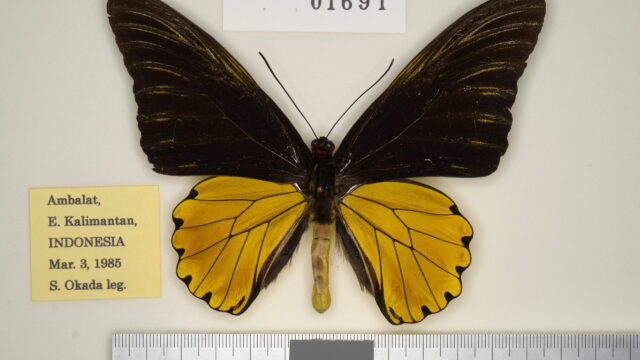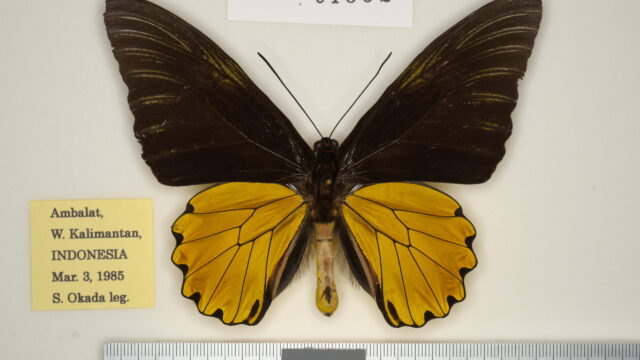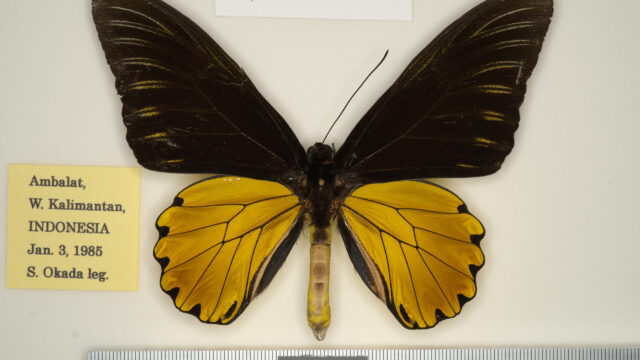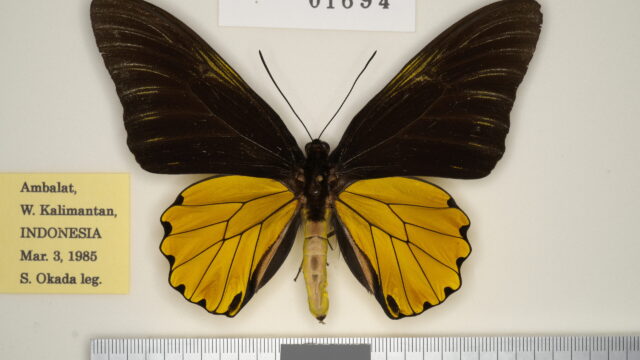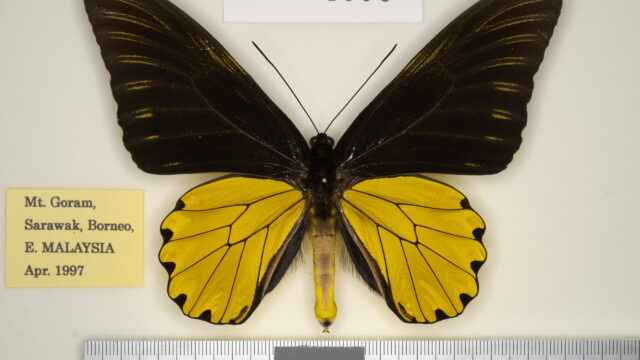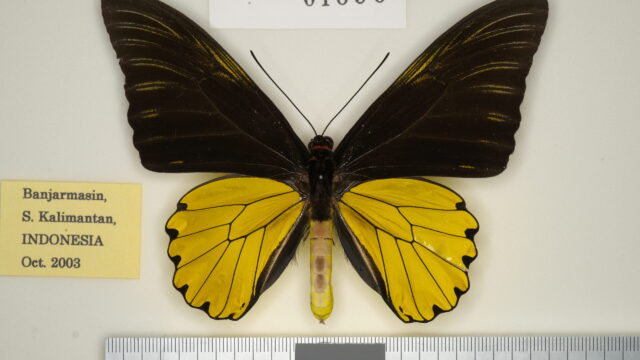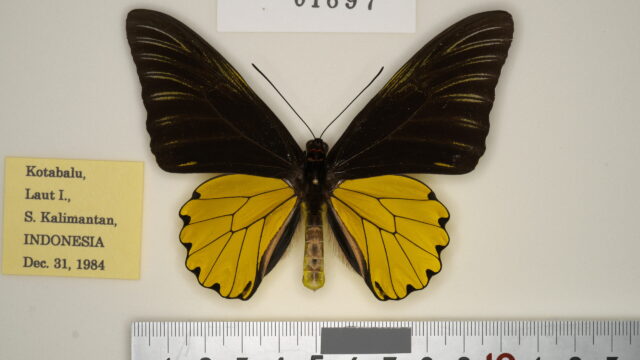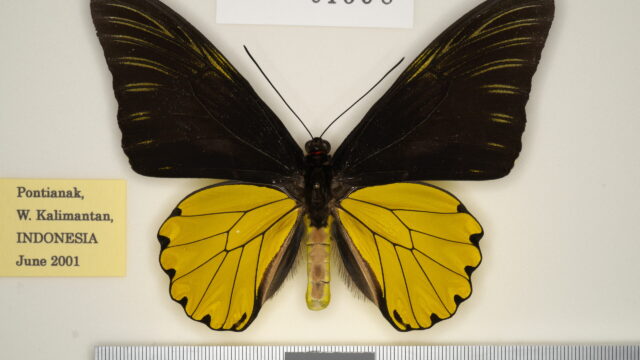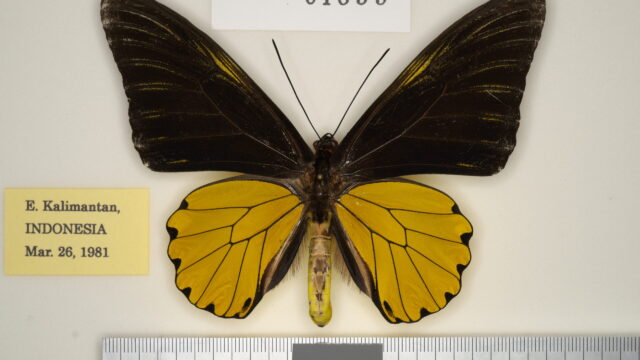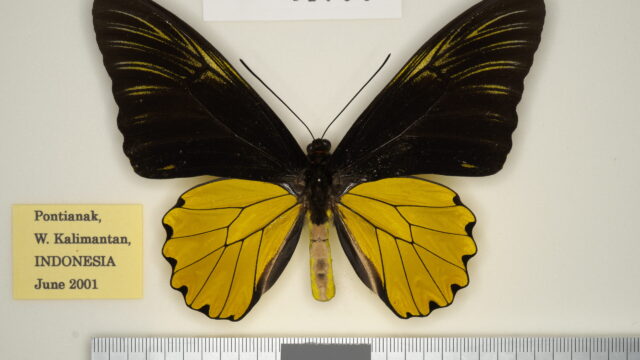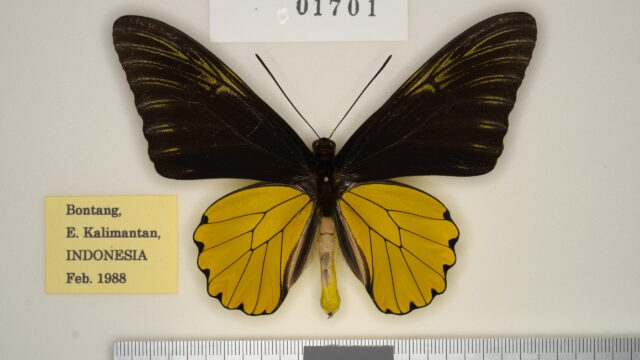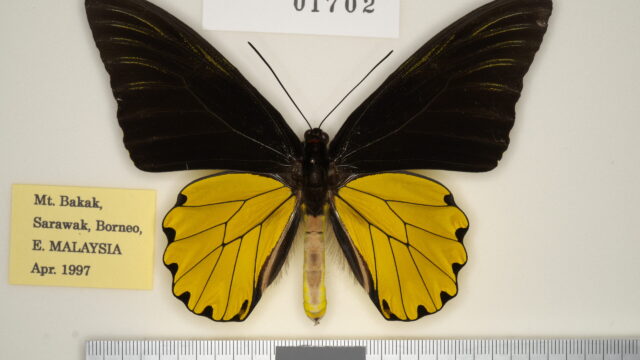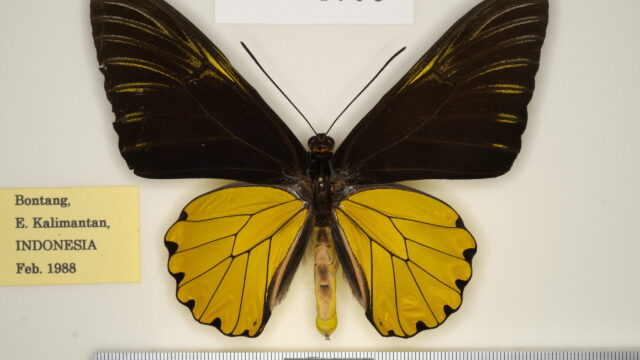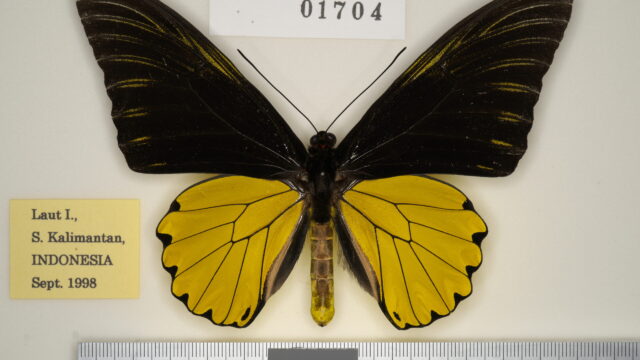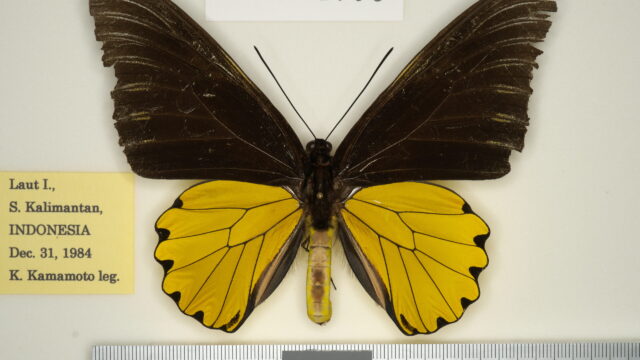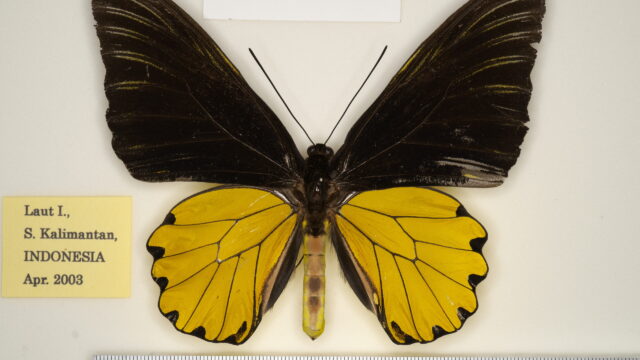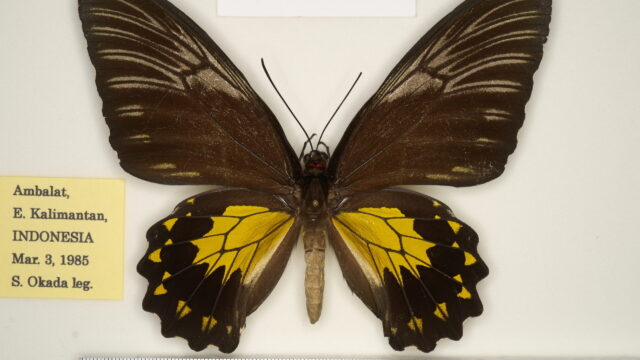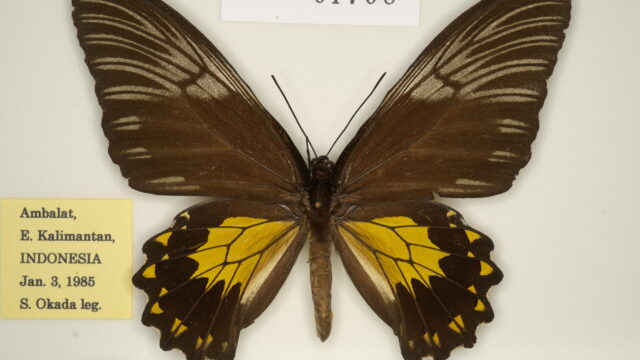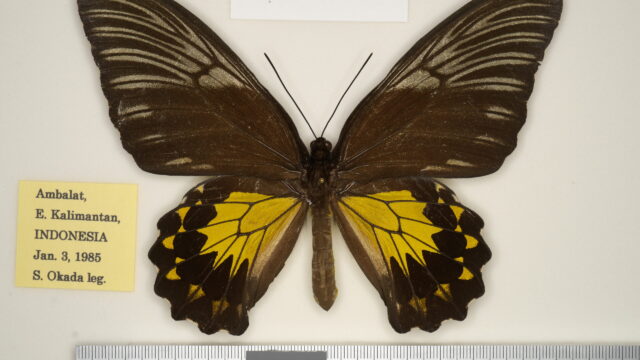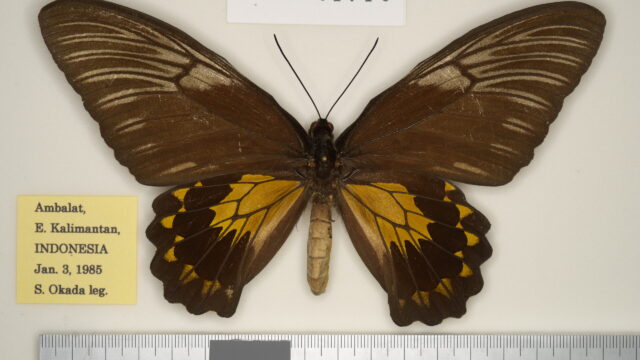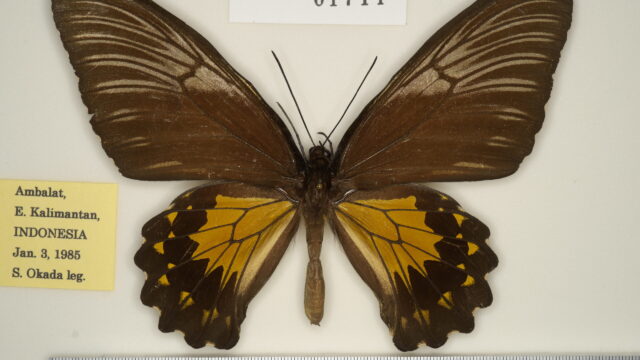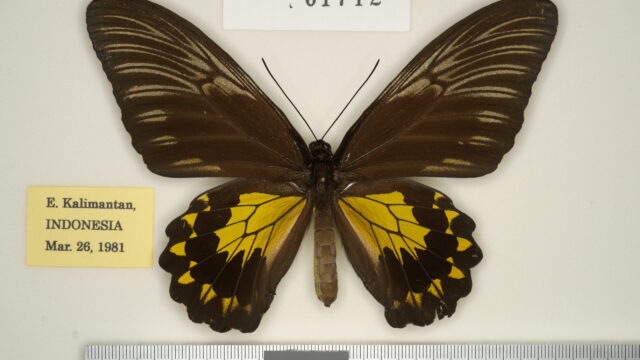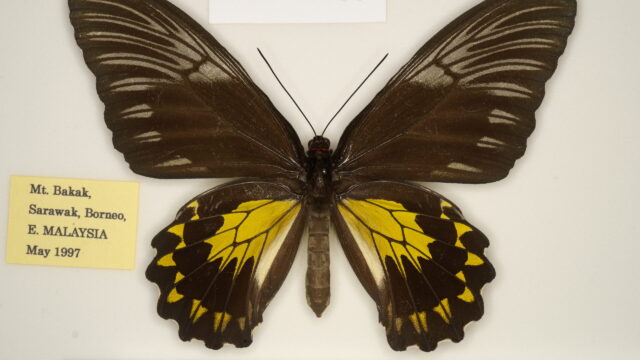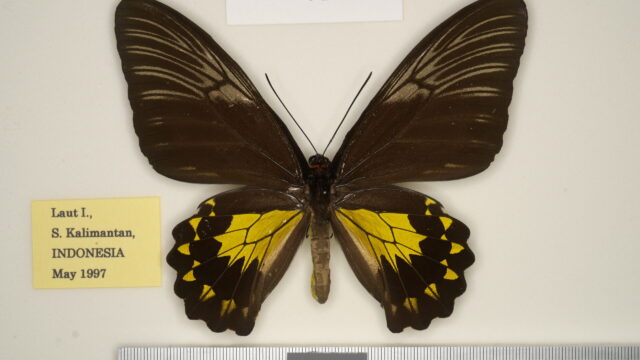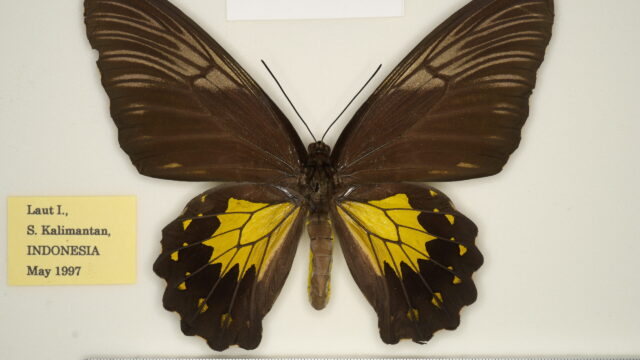- Ssp. actinotia (Jordan, 1909)21) [♀] [♂: andrewei Parrott, 1991 33)]
= gardineri Fruhstorfer, 190211) [♂] (➡euthydemus, flavicollis)
= andrewei Parrott, 199133) [♂, ♀] (E. Kalimantan (Bontang))
(Distribution) [Map 85]
MALAYSIA (Kalimantan=Borneo) [Sarawak] Mt. Goram, Mt. Bakak, Bukit Segu, Kuching; INDONESIA [W. Kalimantan] Putussibau, Pontianak, Sintang, Mt. Saran, Mt. Ringas (Mt. Rangga ?), [C. Kalimantan] Schwaner Range, [S. Kalimantan] Banjarmasin, Meratus Mts., Tanjung, Laut Is., [E. Kalimantan] Balikpapan, Samarinda, Bontang, Melak, Kembangjanggut, [N. Kalimantan] Ambalat. (Type locality: unknown)
(Episodes of discovery and original description)
Jordan (1909) in Seitz’s “Gross-Schmetterlinge” named ssp. flavicollis♀-f. actinotia for the dark form of female from Borneo. Previously, the Bornean subspecies had been included in the ssp. flavicollis, but in 1991 Parrott named the southern species as a separate subspecies andrewei because it was blackened. However, this is precisely the actinotia that Jordan pointed out earlier.
(Characteristics)
There are two subspecies on Kalimantan (=Borneo) Island. The northern subspecies (ssp. flavicollis) has large bright FW vein-stripes on both sexes, while this southern subspecies (ssp. actinotia) has smaller, darker spots, but the boundaries of this change are unclear. Such a phenomenon is also seen in other species as Troides andromache, T. miranda and so on. It is very strange why such a distinct phenomenon could occur only this island. We hope that this phenomenon will be solved in the future.
(Spotted pattern)
♂: Vein-stripes on FW are the finest of any other subspecies. The cell-spot, subapical and submarginal stripes are significantly reduced and only slightly present. The black marginal projections on HW are as small as those of ssp. flavicollis from northern area of Kalimanta (=Borneo).
♀: The size and shape of vein-stripes on FW resembles those of other Sumatran subspecies. The vein-stripes in space 4 form a V-shape. The black discal spots on HW are large and are often extended to near the cell.
(Variation)
♂-f. splendens (Krüger, 1925)26): [FW discoloration] FW with a strongly blue or violet-blue reflection.
